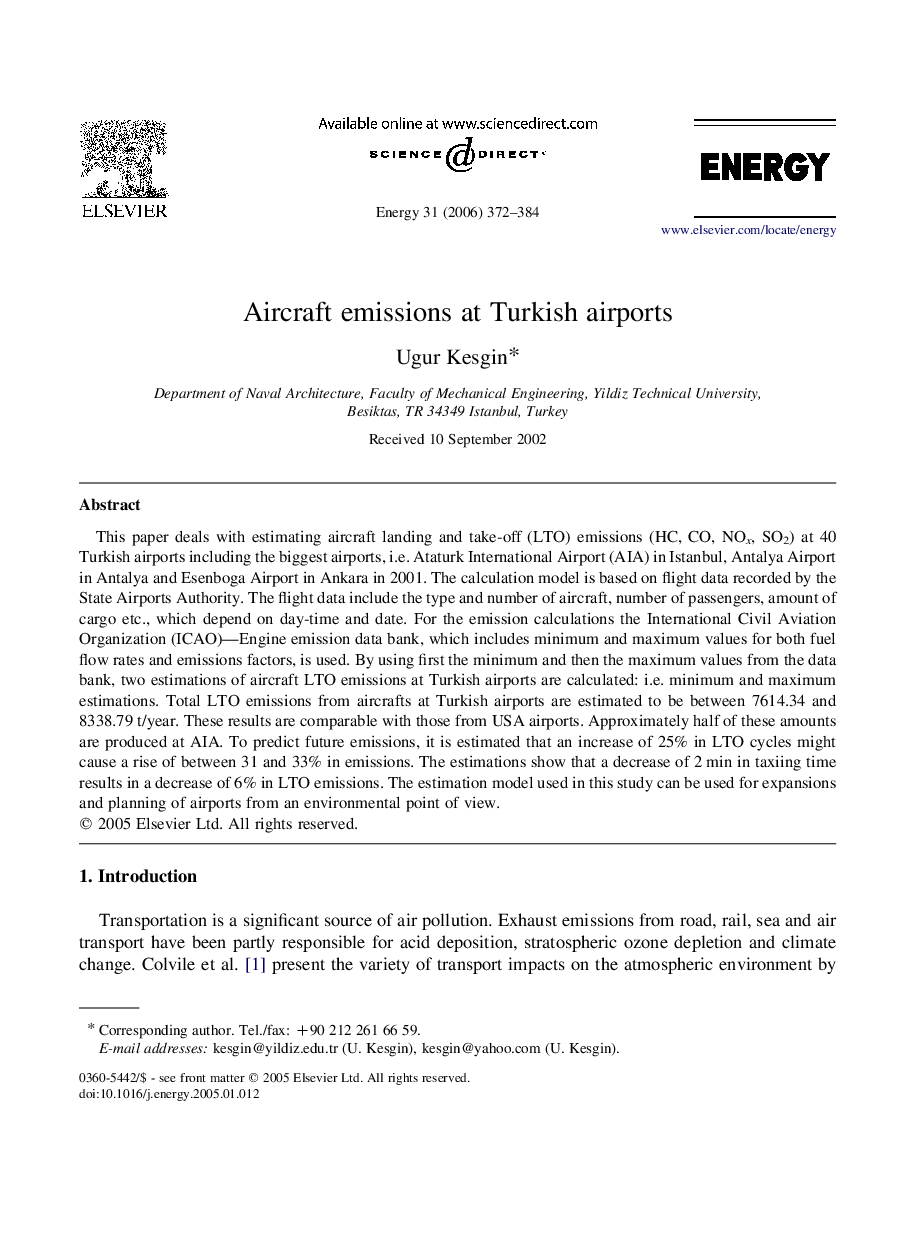| Article ID | Journal | Published Year | Pages | File Type |
|---|---|---|---|---|
| 1736576 | Energy | 2006 | 13 Pages |
This paper deals with estimating aircraft landing and take-off (LTO) emissions (HC, CO, NOx, SO2) at 40 Turkish airports including the biggest airports, i.e. Ataturk International Airport (AIA) in Istanbul, Antalya Airport in Antalya and Esenboga Airport in Ankara in 2001. The calculation model is based on flight data recorded by the State Airports Authority. The flight data include the type and number of aircraft, number of passengers, amount of cargo etc., which depend on day-time and date. For the emission calculations the International Civil Aviation Organization (ICAO)—Engine emission data bank, which includes minimum and maximum values for both fuel flow rates and emissions factors, is used. By using first the minimum and then the maximum values from the data bank, two estimations of aircraft LTO emissions at Turkish airports are calculated: i.e. minimum and maximum estimations. Total LTO emissions from aircrafts at Turkish airports are estimated to be between 7614.34 and 8338.79 t/year. These results are comparable with those from USA airports. Approximately half of these amounts are produced at AIA. To predict future emissions, it is estimated that an increase of 25% in LTO cycles might cause a rise of between 31 and 33% in emissions. The estimations show that a decrease of 2 min in taxiing time results in a decrease of 6% in LTO emissions. The estimation model used in this study can be used for expansions and planning of airports from an environmental point of view.
